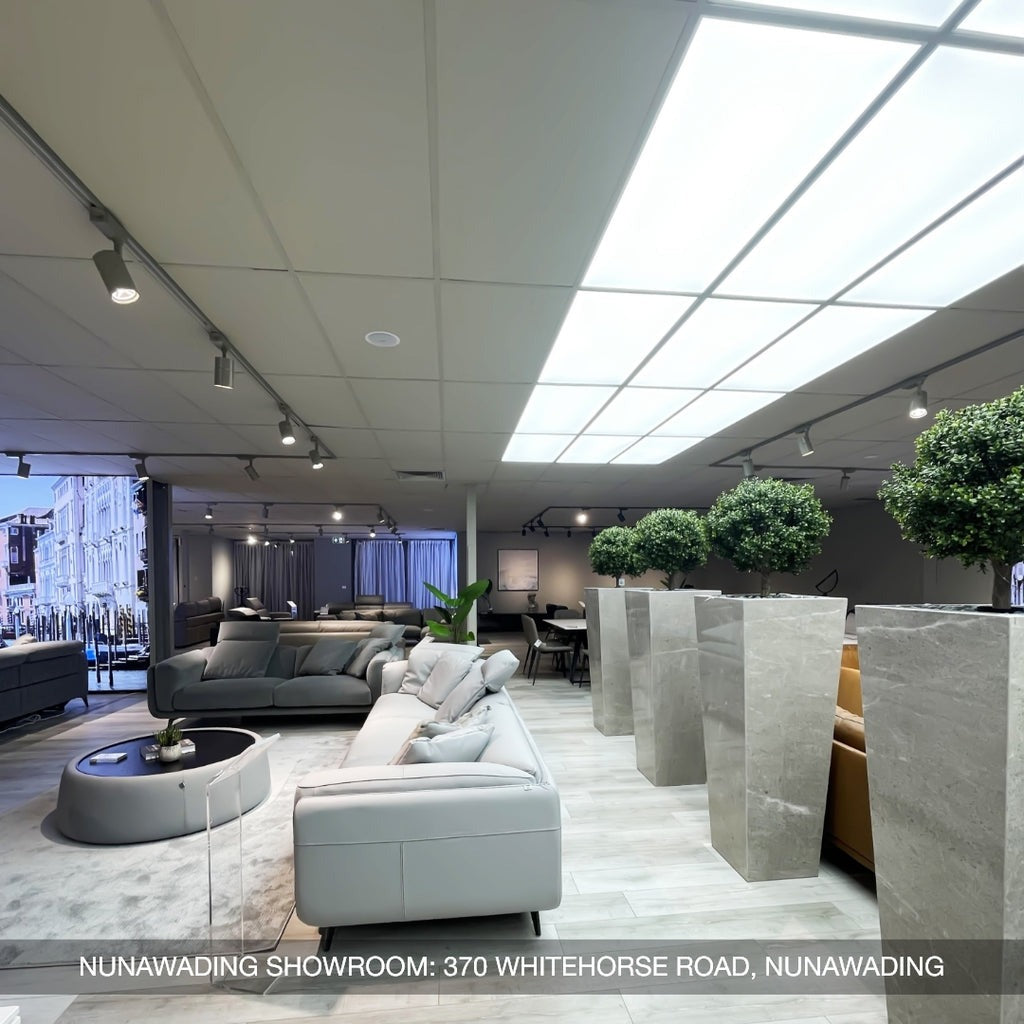Choosing the right dining table is a significant decision that extends beyond mere utility; it's an integral part of your home's decor and functionality. The choice between a glass vs wood dining table is a substantial one, each possessing unique characteristics that can influence your dining space's ambiance and style.
To make an informed decision on which dining table is best glass or wood, we must explore the qualities and advantages of glass vs wooden dining tables. By delving into these aspects, you can determine which option aligns more closely with your personal preferences and complements your living space.
Aesthetic Differences
- Glass Dining Tables:
- Glass Dining Tables:
Glass dining tables are the embodiment of modern elegance. Their sleek and minimalist design exudes contemporary charm. With the transparency of glass, these tables create an illusion of more space, making them ideal for smaller dining areas. The visual lightness of glass allows it to blend seamlessly into various interior design styles, providing a sense of open and airy surroundings.
- Wood Dining Tables:
Wood dining tables, on the other hand, offer a timeless and classic allure. The grain patterns, warm colors, and natural textures of wood infuse character into your dining area. Wood tables create a cozy ambiance, making them well-suited for traditional and rustic interior themes. Their sturdiness and durability are equally appealing, ensuring a dining space that lasts through the years.

The inherent grain patterns, warm hues, and organic textures of wood not only infuse character into your dining space but also evoke a sense of comfort and tradition.
Practicality in Use
- Glass Dining Tables:
- Glass Dining Tables:
Glass tables are a breeze to clean and maintain. Spills and stains can be swiftly dealt with, leaving the surface pristine. However, glass is more susceptible to scratches, and extra care is needed to prevent breakage, making them a better fit for households with responsible handling.
- Wood Dining Tables:
Wooden dining tables are renowned for their durability and resistance to scratches. They can withstand daily use and maintain their appearance over time. However, they may require periodic refinishing to preserve their luster. The robust nature of wood makes them a preferred choice for homes with active families.
Versatility in Home Decor
- Glass Dining Tables:
- Glass Dining Tables:
Glass tables offer a high level of versatility when it comes to home decor. They can seamlessly integrate into different design styles, offering a contemporary and open feel. Adorning a glass table with various tablecloths and decor allows you to tailor your dining space to suit changing seasons and aesthetics.

A glass table effortlessly complements the surroundings, injecting a sense of modernity and openness.
- Wood Dining Tables:
Wooden tables are equally versatile, providing a sense of warmth and adaptability to various design themes. Their natural appeal complements a wide range of interior decor styles, making them a reliable choice for those who enjoy frequent updates to their home's ambiance.
Sustainability and Environmental Considerations
- Glass Dining Tables:
- Glass Dining Tables:
Glass is primarily made from sand, which is an abundant and highly recyclable material. However, the energy-intensive manufacturing process and transportation should be considered in the environmental equation. Opting for glass tables produced with sustainability in mind can minimize the ecological footprint.
- Wood Dining Tables:
Wood raises eco-friendly considerations as well. Choosing tables made from sustainably sourced wood ensures responsible forest management. When you select wood from eco-conscious suppliers, you contribute to the preservation of our planet's vital forests.
Safety Concerns
- Glass Dining Tables:
- Glass Dining Tables:
Safety is a critical concern, particularly if you have young children. While modern glass tables are tempered for safety, they can still pose a risk of shattering upon impact. However, they adhere to stringent safety standards, making them less prone to breakage.
- Wood Dining Tables:
Wooden tables are generally considered safer, especially for homes with active kids, due to their solid construction and fewer breakable components.
Customization and Personalization
- Glass Dining Tables:
- Glass Dining Tables:
Glass tables offer a unique opportunity for customization and personalization. The transparent nature of glass allows you to showcase creative table bases and decorative elements. You can opt for a variety of shapes and sizes to suit your specific requirements, offering a personalized touch to your dining area.
- Wood Dining Tables:
Wooden tables also provide room for customization. They come in a variety of wood types, each with its unique grain patterns and colors. Additionally, you can choose from a range of finishes and stains to match your existing decor or achieve a particular style.

Wooden dining tables offer an equally enticing opportunity for customization and personalization.
Trend and Popularity Insights
- Glass Dining Tables:
- Glass Dining Tables:
Glass dining tables are often associated with modern and contemporary dining spaces. They have gained popularity for their sleek and minimalist design, making them a trendier choice for those looking to embrace a more up-to-date interior aesthetic.
- Wood Dining Tables:
Wood tables have an enduring and timeless appeal. While they may not always follow the latest design trends, they maintain a classic and elegant status in the world of interior design. They remain a popular choice for those who appreciate a traditional and inviting ambiance.
Durability and Lifespan
- Glass Dining Tables:
- Glass Dining Tables:
Glass tables, while easy to clean, are more susceptible to scratches and the risk of breakage upon impact. However, modern manufacturing techniques and tempered glass make them more durable than ever before. With proper care, they can have a long lifespan.
- Wood Dining Tables:
Wooden tables are renowned for their durability and resistance to scratches. They can endure years of use and can be refinished to look like new if needed. Solid wood tables, in particular, are known for their longevity.
Maintenance and Care
- Glass Dining Tables:
- Glass Dining Tables:
Glass tables are relatively easy to maintain, with spills and stains easily wiped away. However, they require careful handling to prevent scratches and breakage.
- Wood Dining Tables:
Wooden tables may require more maintenance over time. They can be susceptible to scratches, and periodic refinishing may be needed to maintain their luster. However, with proper care, wood tables can age beautifully.

It's important to note that wooden dining tables may necessitate a bit more care and maintenance as they age gracefully.
Cost Implications
- Glass Dining Tables:
- Glass Dining Tables:
The cost of glass tables varies, with factors like thickness and size influencing the price. While they can be affordable, high-quality glass tables can be an investment.
- Wood Dining Tables:
Wooden tables also have a wide price range, depending on factors like wood type and craftsmanship. They can range from budget-friendly options to high-end, custom pieces.
Conclusion
In the perpetual debate between a glass vs wood dining table, there emerges no unequivocal victor, but rather a profound appreciation for the nuanced interplay of preferences and practicalities. This comprehensive dining table buying guide has meticulously dissected the multifaceted dimensions that underpin this pivotal decision, encompassing the aesthetic allure, functionality, versatility, sustainability, and safety of contemporary dining table crafted from diverse dining table materials.
Glass dining tables, with their sleek modernity, offer an openness and elegance that is well-suited to certain design styles and preferences. On the other hand, wood dining tables exude timeless warmth and an enduring charm that resonates with those who embrace tradition and a sense of history.
The choice between glass and wood dining table ultimately boils down to an intimate understanding of one's unique needs, lifestyle, and personal predilections. While glass may excel in creating an illusion of space and accommodating modern design sensibilities, wood offers durability and a classic aesthetic. The final verdict? It's not about determining which is superior but about embracing the rich tapestry of choices in the realm of dining table materials, each of which contributes to the creation of a harmonious and personalized dining experience.




